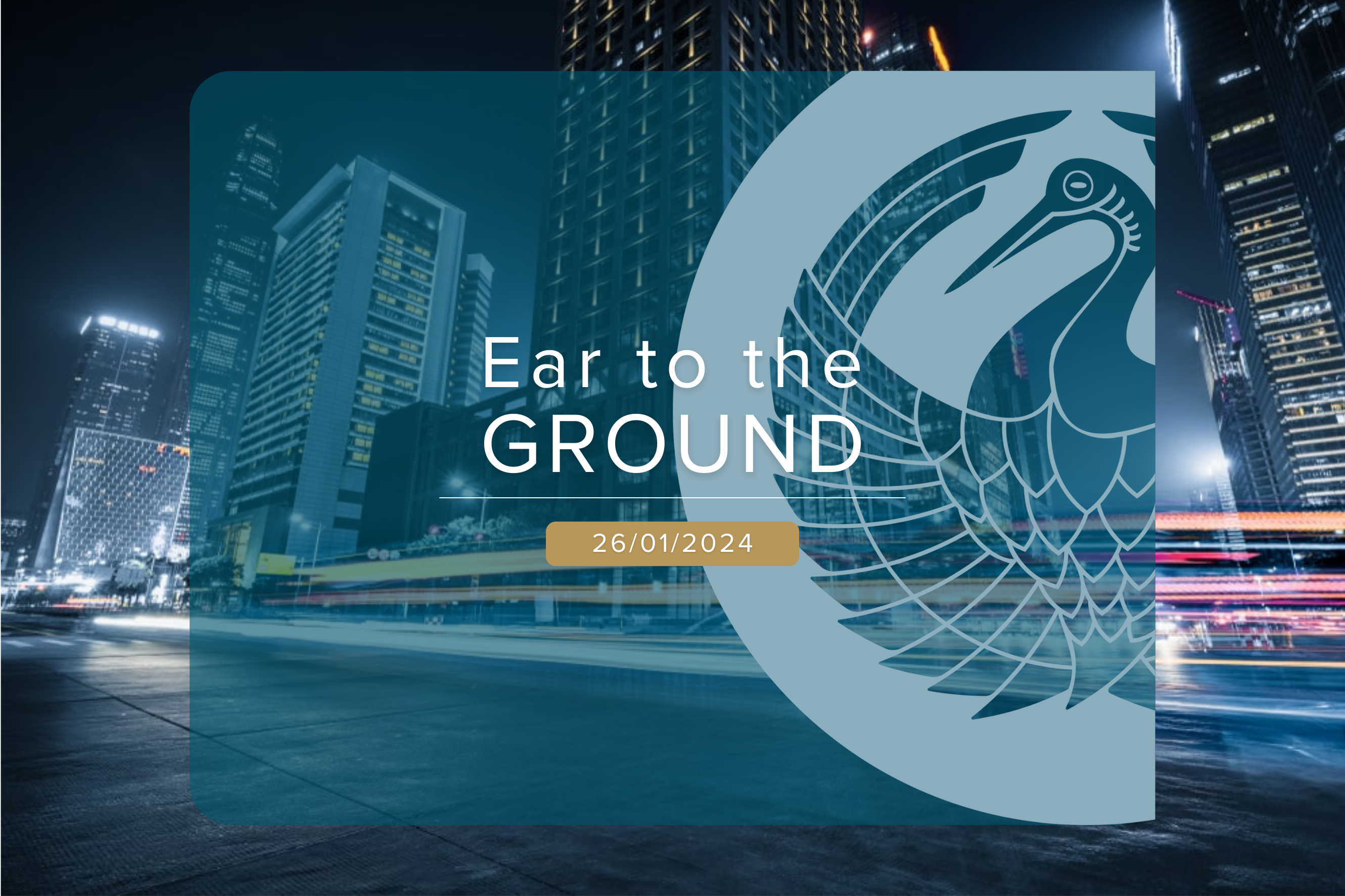Ear to the ground
26 January 2024

Eyes were on US economic growth this week, with advanced figures released for the fourth quarter of 2023. Whilst the rate of growth was lower than that seen in the third quarter, it came in above consensus forecast. The economy grew at an annualised rate of 3.3% quarter on quarter, higher than the consensus forecast expectation of 2%. Regarding the consumer, spending on goods grew at 2.8% compared to 3.1% in the third quarter. The consumption of services however rose at a faster rate, 2.4% versus 2.2% the previous quarter. The rate of exports meanwhile saw a large jump, at 6.3% versus 5.4%. All in all, the economy grew 2.5% in 2023, which was marginally below the expected rate of 2.6%.
The market took confidence in these figures, raising their expectations that a soft landing, if not low landing, can be achieved for the economy. Whilst these figures are indeed positive, it is important to remember that these are backward looking rather than forward looking data. For forward looking data, the Conference Board Leading Economic Indicator for the US economy remains in negative territory. Looking in greater detail, we see that it is the non-financial components where the weakness lies. The areas of consumer expectations for business conditions, along with new orders, are particularly weak. Recently it has turned up slightly. We also note that there have been periods in the past where the leading indicator moves have been much more severe than the changes in economic growth actually seen, with perhaps the exception of COVID induced weakness. Could this be another such period?
Inflation data from the US, as measured by the Federal Reserve’s preferred measure, being PCE (personal consumption expenditure), was very much in line with market expectations. Core PCE, which excludes food and energy, posted a year on year rise of 2.9%, below Novembers reading of 3.2% and the consensus expectation of 3%. Whilst the target rate is 2%, the right progress is being made here.
Crossing the Atlantic, the European Central Bank left interest rates on hold at 4.5%, as expected. Despite market optimism that we will see cuts here in the not too distant future, this still appears to be some time away according to President Lagarde. In their post meeting conference, it was reiterated that the ECB would keep monetary policy at sufficiently restrictive levels for as long as necessary to ensure that inflation was back at the target level of 2% and confident that it was to stay there.
Travelling further east we finally arrive at China. It would appear that the authorities here are now uncomfortable with the nervousness and price action surrounding the stock market. Sentiment around Chinese equities, both domestically and internationally, remains very low. The Hang Seng China Enterprises index trades at the lowest level seen since 2005. Looking at other measures, data from Bloomberg shows the Hang Seng index now trades at a price to earnings ratio which is lower than the price to book ratio for the Nasdaq index of the US. You would not expect these two ratios to be anywhere near each other, with the price to earnings ratio always significantly higher.
With Chinese indices continuing to fall, action is beginning to be taken. Whilst the Chinese central bank left interest rates unchanged this week, they have announced measures to release c.$280bn into the economy. At the same time, they also announced that in February they will be reducing the reserve ratio for banks, therefore also hopefully releasing liquidity into the system. Ultimately, however, the demand for this liquidity needs to be there, not just the supply. A start at least, and markets did initially respond positively, but more may be needed to instil the level of confidence investors are looking for to put their money to work in the stock market again.
This article is for information purposes only and should not be construed as advice. We strongly suggest you seek independent financial advice prior to taking any course of action.
The value of this investment can fall as well as rise and investors may get back less than they originally invested. Past performance is not necessarily a guide to future performance. The Fund is suitable for investors who are seeking to achieve long term capital growth.
The tax treatment of investments depends on the individual circumstances of each client and may be subject to change in the future. The above is in relation to a UK domiciled investor only and would be different for those domiciled outside the UK. We strongly suggest you seek independent tax advice prior to taking any course of action.
Subscribe Today
To receive exclusive fund notifications straight into your inbox, please complete this form.